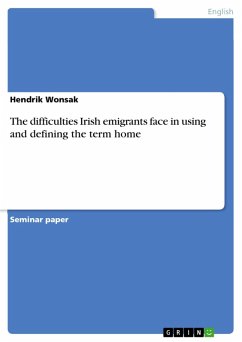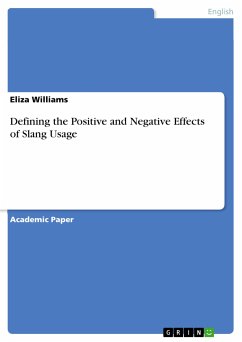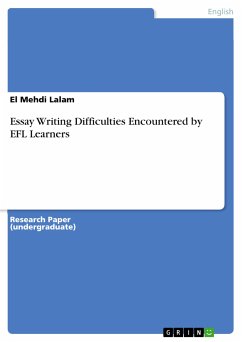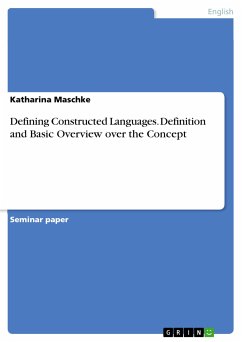Seminar paper from the year 2015 in the subject English Language and Literature Studies - Culture and Applied Geography, grade: 2,7, University of Hamburg, language: English, abstract: In this term paper, I will try to work out the different meanings of the word "home" and observe, how the connotations of the noun changed for emigrants. Additionally, I will apply Martin Heidegger's theory of "Bauen, Wohnen, Denken" to the understanding of home in Colm Toibin's "Brooklyn" and Frank McCourt's "Tis". The pictures of overcharged refugee ships on the frontpages of our daily newspapers, talk shows discussing possible bans of immigration on the radio and video clips of scared children hiding in shelters - the topic of emigration is omnipresent. Every year, there are millions of families leaving their old identities behind, seeking better lives in different countries. Since 1800, roughly ten million Irish people have emigrated from the island. Events, such as the Great Irish Potato Famine, a period of starvation and illness from 1845 to 1851, or economical crises, caused mass emigration. During the depression of the 1950s, the act of emigration almost became a passage rite and three out of five Irish children emigrated. Since most people in Ireland were rather poor and the ship fares were costly, it was uncommon for complete families to emigrate. Mostly, parents sent their children to another country, in order for them to find a job, earn a living and send remittances back to Ireland. Most Irish emigrants settled down in England, Scotland, South Wales and especially in North America. Nowadays, there are 34.5 million people with Irish ancestry living in the United States of America. That is 11.1% of the total American population and more than six times the population of Ireland. After their arrival in the United States of America, Irish emigrants were facing a variety of difficulties arising from religious and cultural differences between Ireland and the United States. A major difficulty for Irish emigrants was the meaning and the usage of the word home.
Dieser Download kann aus rechtlichen Gründen nur mit Rechnungsadresse in A, B, BG, CY, CZ, D, DK, EW, E, FIN, F, GR, HR, H, IRL, I, LT, L, LR, M, NL, PL, P, R, S, SLO, SK ausgeliefert werden.









